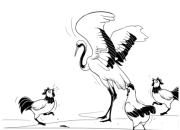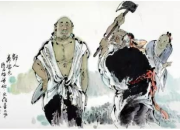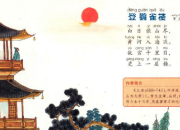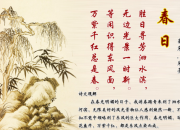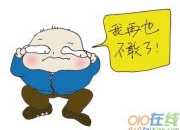届高三高考适应性测试4月英语试卷
时间:2021-08-312019届高三高考适应性测试4月英语试卷
一、阅读理解
The popular image of the mountain climber is of a person carefully climbing a steep cliff with a network of safety ropes, but it is not the only kind. Many climbers now enjoy bouldering. It’s more accessible and better for the environment.
What is bouldering
Bouldering is a sport that involves climbing on, over, and around boulders up to approximately twenty feet above the ground. Participants employ no safety ropes.
Why boulder
improve your climbing skills by focusing on basics
places to climb, such as climbing walls at gyms and parks, easy to find
less time commitment to bouldering than to mountain climbing
intellectual and physical enjoyment as one solves problems
Bouldering Terms
crimp: a very small handhold
foothold: a place where one may place a foot to aid in climbing boulder
jug: a very large handhold that is easy to use problem:The path up a boulder is referred to as the "problem"that one must solve. The " solutionis the sequence of moves one makes up and over a boulder.
Here is an example of a climber addressing a bouldering problem.
Figure 1: The climber has two routes she could take, one to the left and one to the right. The left one appears easier because it has a jug within easy reach, but look what happens if she chooses that direction. She gets stuck on the rock and has to go back down. Sometimes that is even more difficult than going up.
Figure 2: The climber takes the one to the right this time. Using a foothold and placing her righ hand in a crimp, she is able to lift herself up and locate other handholds. After only a few moves, she is able to throw her leg over the top of the boulder and pull herself up.
1.What can we leam about bouldering
A. It is a popular indoor sport.
B. It is a kind of climbing without ropes,
C. It needs maps and equipment.
D. It is a steep cliff climbing.
2.Why does bouldering become popular
A. Because it challenges the limits.B. Because it is not readily available.
C. Because it builds minds and bodies.D. Because it ia a team game.
3.According to the example, what is the right route usually like
A. It is a shortcut.B. It a dead end.
C. It is tough but to the top.D. It is lined with jugs.
I have learned something about myself since I moved from Long Island to Florida three years ago. Even though I own a home in Port St. Lucie just minutes from the ocean, an uncontrollable urge wells up to return to Long Island even as others make their way south. I guess I am a snowbird stuck in reverse. Instead of enjoying Florida’s mild winters, I willingly endure the severe weather on Long Island, the place I called home for 65 years.
I’m like a migratory bird that has lost its sense of timing and direction, my wings flapping a- gainst season.
So what makes me fly against the tide of snowbirds The answer has a lot to do with my reluc tance to give up the things that define who I am. Once I hear that the temperature on Long Island has dipped into the range of 40 to 50 degrees, I begin to long for the sight and crackling sound of a wood fire. I also long for the bright display o£ colors — first in the £all trees, and then in the limits around homes and at Rockefeller Center. Floridians decorate too, but can’t create the special feel of a New England winter.
I suppose the biggest reason why I telum is to celebrate the holidays with people I haven’t seen in months. What could be better than sitting with family and friends for a Thanksgiving turkey din ner, or watching neighbors’ children excitedly open gifts on Christmas Even the first snowfall seems special. I especially enjoy seeing a bright red bird settling on a snow-covered branch ( My wife and I spend winters at a retirement community in Ridge, and I’m grateful that I don’t have to shovel.)
While these simple pleasures are not unique to Long Island, they are some of the reasmis why I come back. Who says you can’t go home
1.What does the underlined word "snowbird" in Paragraph 1 refer to
A. A person spending winter in a warmer climate.
B. A bird seen chiefly in winter.
C. A person permanently living in a foreign country.
D. A bird flying to the south in winter.
2.What’s the difference between Florida and Long Island
A. Winters in Long Island are milder.
B. The snowbirds in Long Island are rarer.
C. Weather in Long Island is severer.
D. Long Island is nearer to the ocean.
3.What did the author miss most when he was in Florida
A. The cold temporature.B. The colorful light display.
C. The family gathering.D. The winter landscape.
4.What’s the author’s purpose in writing the text
A. To praise the beauty and warmth of his hometown.
B. To describe his dream to be a free bird.
C. To explain the reasons for moving from his hometown.
D. To express his feeling of missing his hometown.
It’s undeniable that spending time outdoors and in nature lifts our spirits and makes us feel more centered and at peace. When we breathe in fresh air, and enjoy the beauty of trees, streams and oceans, we naturally tend to feel more connected to ourselves and others.
Over the past decade, scientists have been exploring why nature — and dirt specifically — is such a powerful tool in improving our mood. According to researchers, the secret may lie in the mi crobes (微生物)of the soil. One bacterium specifically----Mycobacterium Vaccae (M. Vaccae) —has been identified as having the power to affect our moods and cognitive function as well.
Experiments conducted at Sage Colleges in New York found that contact with M. Vaccae can increase serotonin levels in the brain — a chemical that is associated with higher levels of happi ness ,increased focus, and reduced anxiety. In order to explore how the bacteria can improve learn ing, researchers Dory Mathews and Susan Jenks experimented with mice in a maze. Mice that in gested the bacteria navigated the maze twice as fast as the control group and proved less anxious as well.
Humans can absorb M. Vaccae just by playing in the dirt. We take in it when we breathe, we consume it in organic vegetables, and it can also enter our bloodstream through skin contact, espe cially where we have open cuts. This may explain why children in school perform better after break.
Neuroscientist Christopher Lowry at the University of Bristol in England believes that he has i- dentified why this incredible bacterium works. "What we think happens is that the bacteria activate immune cells, which release chemicals called cytokines that then act on receptors on the sensory nerves to increase their activity. ”

